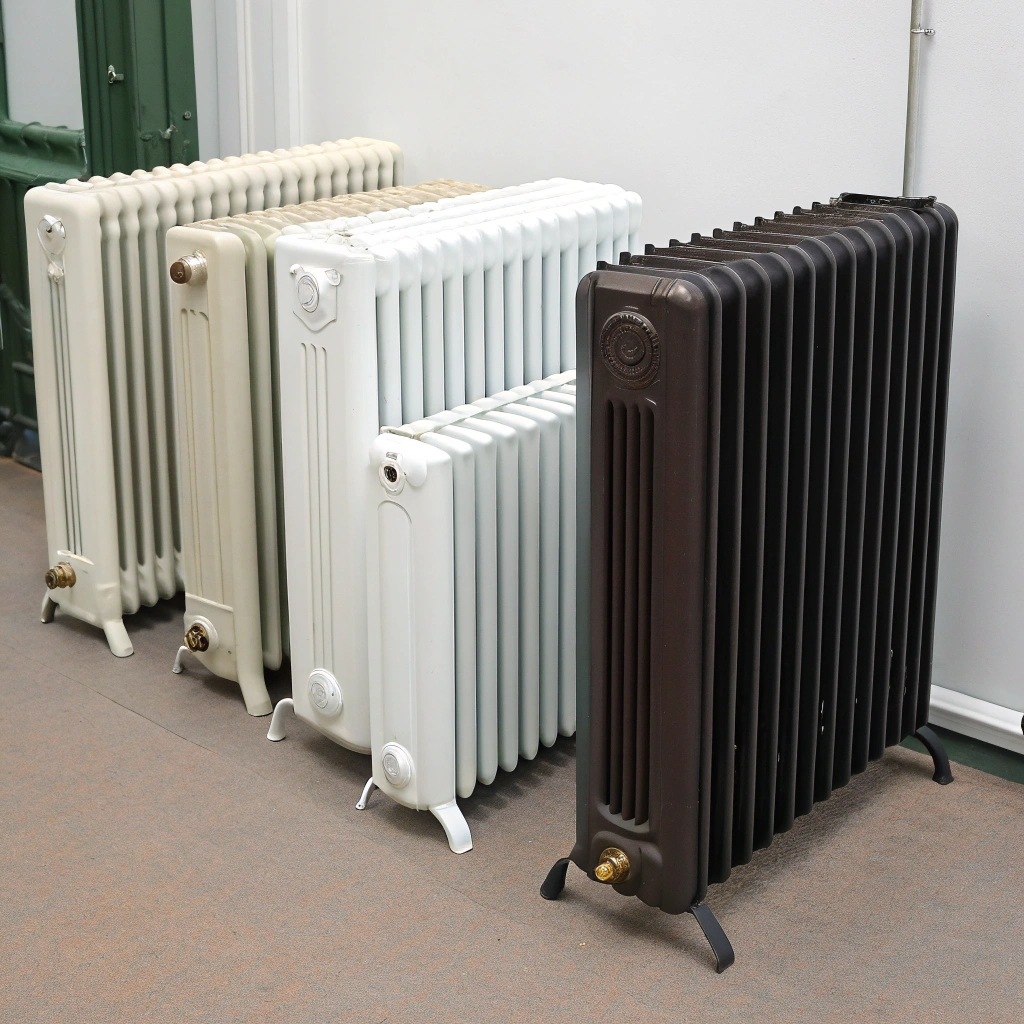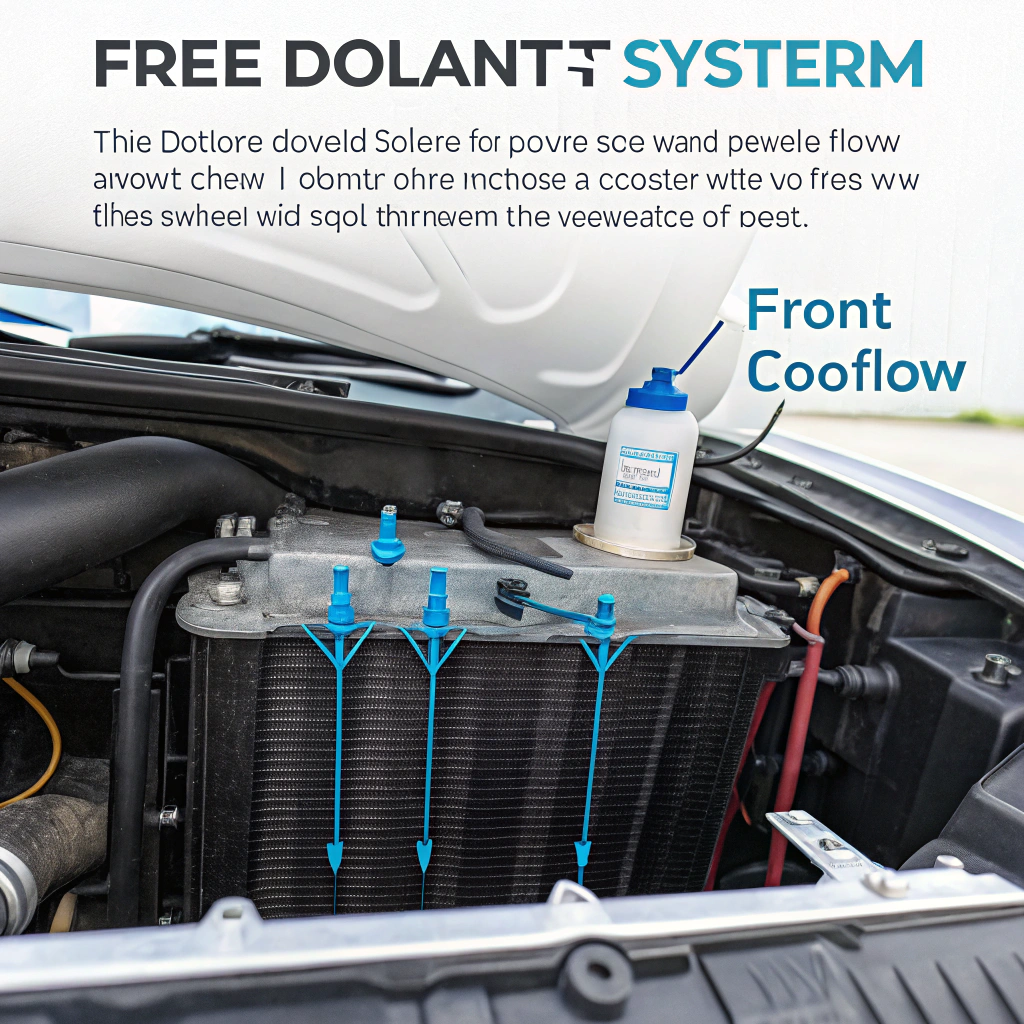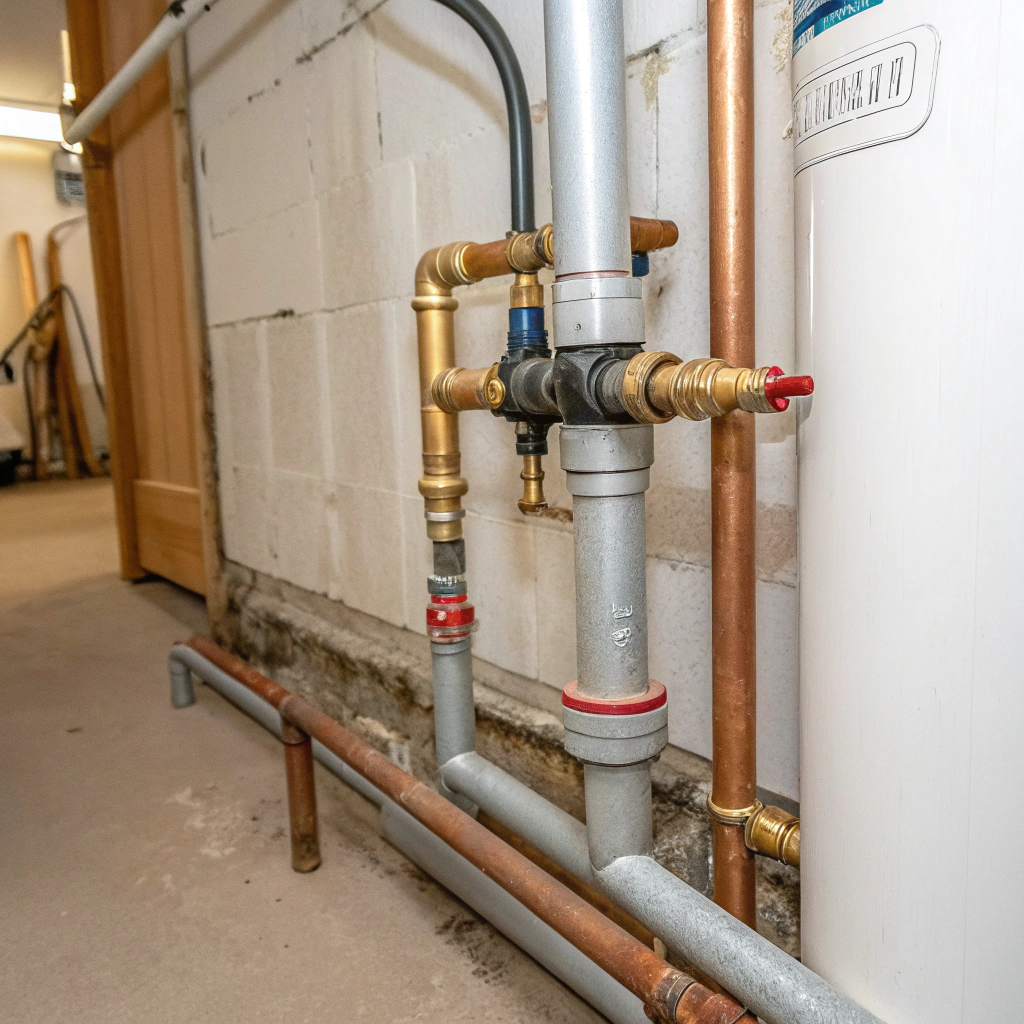What are the two types of car radiators?
When I replaced my radiator for the first time, I didn’t even realize there were different designs. That mistake cost me extra shipping and return delays.
The two main types of car radiators are crossflow and downflow, and they differ by the direction coolant flows through the radiator core.
Knowing the type of radiator matters because it affects fitment, performance, and cooling behavior. Let’s take a closer look at what sets them apart.
What’s the difference between crossflow and downflow radiators?
Most people only see metal tanks and hoses, but the internal flow direction changes everything.
Crossflow radiators route coolant horizontally through side-mounted tanks, while downflow radiators move coolant vertically between top and bottom tanks.
These two styles influence engine bay layout and how efficiently the radiator cools the engine.
Layout and Function
Crossflow radiators have tanks on the left and right. Coolant enters from one side, moves sideways across the core, and exits through the other. Downflow designs put tanks on the top and bottom, moving coolant from top to bottom by gravity and pump force.
Crossflow radiators are better for modern cars with wide front ends and low hoods. Their shape is ideal for horizontal airflow and tighter spaces. Downflow designs work well in tall vehicles like trucks or older cars that have vertical room.
Here’s a clear comparison:
| Feature | Crossflow | Downflow |
|---|---|---|
| Coolant Flow | Side to Side (Horizontal) | Top to Bottom (Vertical) |
| Tank Placement | Left & Right | Top & Bottom |
| Fitment | Good for low hoods | Better for tall bays |
| Common Use | Modern vehicles | Classic cars, older trucks |
Crossflow radiators have tanks on the sides and allow horizontal coolant flow.True
The core design moves coolant from left to right, optimizing for wide engine bays.
Downflow radiators send coolant from one side to the other horizontally.False
Downflow designs move coolant vertically, not side to side.
Are aluminum radiators better than copper ones?
I once replaced a corroded copper radiator with a shiny new aluminum one. I noticed the difference immediately—better cooling, less weight, and easier handling.
Aluminum radiators are lighter and more durable, while copper-brass radiators transfer heat more efficiently but can be heavier and prone to corrosion.
The “better” option depends on what you prioritize: cooling power, longevity, repairability, or weight.
Material Showdown
Aluminum radiators are common in modern vehicles and performance cars. They’re strong, rust-resistant, and light. Copper-brass radiators have better heat transfer rates, but they’re heavier and more prone to leaks if not maintained properly.
Aluminum is hard to repair once damaged, but it lasts longer with fewer issues. Copper-brass is easier to patch and solder, making it great for classic vehicles where field repair matters more.
Here’s a side-by-side look:
| Property | Aluminum | Copper-Brass |
|---|---|---|
| Heat Transfer | Moderate (more fins used) | Excellent |
| Weight | Lightweight | Heavy |
| Corrosion Resistance | Very High | Moderate |
| Repairability | Difficult | Easy |
| Cost | Usually Cheaper | Often Pricier |
Aluminum radiators are more corrosion-resistant and lighter than copper ones.True
Their lightweight design resists rust and vibration, making them ideal for modern cars.
Copper radiators are easier to repair but heavier and more prone to corrosion.True
Copper-brass radiators are often used in older cars because they’re easier to solder.
How to tell what type of radiator is in your car?
Back when I started working on my car, I couldn’t tell one radiator from another. But over time, I learned how to spot the differences with just a glance.
You can identify your radiator type by tank placement, coolant flow direction, material, and visual clues like cap position or core layout.
It’s simple once you know what to look for.
Easy Ways to Identify
First, check the radiator tank position. If the tanks are on the left and right, it’s a crossflow. If they’re on the top and bottom, it’s a downflow.
Second, look at the shape: is it wider than it is tall? That’s usually a crossflow. Taller than wide? Likely a downflow.
Then, inspect the material. Aluminum radiators are bright silver and often have clean welds. Copper-brass ones are duller and may have solder joints.
Don’t forget the radiator cap. If it’s on the side, you’re probably looking at a crossflow. If it’s up top in the center, it’s likely a downflow.
Finally, check the owner’s manual or search the part number printed on the radiator—manufacturers usually specify the type.
Tank position and shape help determine the radiator type.True
Side tanks mean crossflow; top and bottom tanks mean downflow.
Radiator type cannot be identified visually.False
Visual cues like tank layout, cap position, and material reveal radiator type.
Which radiator type is best for high performance cars?
When I upgraded my track car, cooling became a problem. The stock radiator just couldn’t keep up. That’s when I switched to a high-flow crossflow aluminum radiator—and the temperature drop was instant.
Crossflow aluminum radiators are best for high performance cars due to their weight, airflow efficiency, and ability to handle high pressure and heat.
Racing engines generate more heat, especially at high RPMs. The cooling system has to be stronger and faster to keep up.
Why Crossflow and Aluminum Win
Performance cars often have lower hood profiles, where crossflow radiators fit better. The wide design allows for a large core surface without increasing height. Aluminum construction is ideal for withstanding vibration and pressure from turbochargers or racing use.
Multi-row cores and double-pass flow systems further enhance cooling. These advanced crossflow designs send coolant through the core twice before exiting—maximizing contact time and heat dissipation.
If your car is used for racing, towing, or aggressive driving, a crossflow aluminum unit will outperform older downflow or copper-brass types every time.
Crossflow aluminum radiators are ideal for high performance and racing vehicles.True
They combine efficient cooling with low weight and high durability under extreme conditions.
Downflow copper radiators are better for modern performance cars.False
Downflow copper radiators are less efficient in modern high-output engines due to space and weight limitations.
Conclusion
Radiators may seem simple, but their design makes a big difference. Crossflow or downflow? Aluminum or copper? The best radiator depends on your car’s setup and how you drive. I’ve learned to choose based on function, not just looks. Get this part right, and your engine will thank you every mile.



![[Product Name] - [Key feature or purpose of the product] Image of [Product Name], featuring [key features, color, design, and any identifiable characteristics]](https://sinoextrud.com/wp-content/uploads/image-of-product-name-featuring-key-features-color-design-and-any-identifiable-characteristics.webp)


![Product image of [Description of the product, including key features or aesthetic details]](https://sinoextrud.com/wp-content/uploads/product-image-of-description-of-the-product-including-key-features-or-aesthetic-details.webp 1024w, https://sinoextrud.com/wp-content/uploads/product-image-of-description-of-the-product-including-key-features-or-aesthetic-details-768x768.webp 768w, data:image/webp;base64,UklGRpoAAABXRUJQVlA4II4AAAAwAgCdASoMAAwAAQAaJZQCdAEUuTFsD+XmYAD+2EV1d8fVpbzx3XU3cUn8pkxycQSL/uC/91/YxrxSC9WP+PrZ28m7gvO1J6kP95mwggbOprj2OkpOWzWoT2NTKtsXhYjWNagMhz7BkK5H0fxfBf4Nc7Z59KfJd8Tfp+ei2UR9VsE1VlsIc4U+bhvl5gAA 12w, https://sinoextrud.com/wp-content/uploads/product-image-of-description-of-the-product-including-key-features-or-aesthetic-details-600x600.webp 600w)

